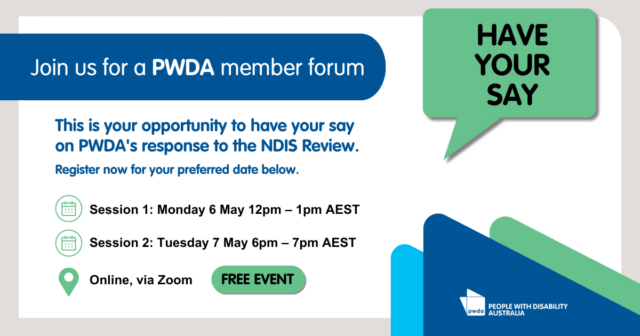Millions of Australian workers remain unaware that they’re missing out on billions in super they are entitled to, so Industry Super Australia is urging workers to check if they are getting what they are owed.
Latest ISA analysis shows that one in four Australians workers missed out on a total of $5 billion in super last year and that awareness of the problem is chronically low, especially amongst younger workers and those on lower incomes – groups who are most likely to be ripped off. Not being paid super can blow an up to $60,000 hole in retirement nest eggs.
It can often take months for workers to uncover that they have been underpaid, making recovery far more difficult. Making matters worse 70% of workers don’t realise super can legally be paid just four times a year, not with their wages – despite what it says on payslips.
The outdated laws and the lack of awareness amongst workers is being exploited by some unscrupulous employers who don’t pay super.
Mandating that super is paid with wages will make it much easier for workers to track when payments are made and uncover underpayments quicker, making recovery more likely.
Today’s launch of Industry Super Australia’s unpaid super report marks the start of a campaign to boost awareness of the problem and provide workers with some practical tips on how they can get their unpaid super back. ISA will be sharing stories of real members who have been ripped off.
ISA will be joined by Super Consumers Australia in calling for the government to tackle the problem at the source by mandating employers pay super into their employees’ accounts at the same time as wages.
The unpaid super scourge impacts workers in every corner of Australia, but it is areas with a high proportion of young people and workers in trades that feature most in the list of the worst 20 federal electorate for unpaid super (see table 1).
The youthful Sydney electorate tops the list, where 30,000 workers were impacted, followed by blue-collar Lalor in Melbourne’s western suburbs where 27,000 workers were underpaid. Electorates in Queensland and Western Australia also make the list.
Until government fixes the systemic problem by mandating employers pay super with wages, ISA is going to provide members with some practical tips to make sure they are being paid super correctly by:
Ø Checking with your fund that you are being paid super – it must be 10% on top of your wages, unfortunately many workers can not trust that super is being paid – despite what it says on the payslip.
Ø Talking to your employer to ensure you are being paid correctly, if you are not comfortable doing this contact your union or representatives
Ø If after speaking to your employer and you still believe you are being underpaid lodge a complaint with the ATO who will chase the debt on your behalf.
Comments attributable to Industry Super Australia Chief Executive Bernie Dean:
“Millions of Australians remain unaware they’re being ripped off on their super, just assuming that it’s being paid because it appears on their payslip.”
“Until government fixes the problem by making employers pay super with wages, members need to be aware they could be be being underpaid and take steps to protect their retirement savings.”
“Most employers are doing the right thing, but they are being undercut by dodgy competitors who are ripping people off. Paying super with wages is the only way to get workers their money and level the playing field.”
Table 1: Top 20 unpaid super electorate by amount of people underpaid
State | Electorate | Persons | Percentage of electorate | Average underpaid | Total ($m) |
NSW | Sydney | 30,950 | 30% | 1,780 | 55.1 |
VIC | Lalor | 27,850 | 34% | 1,293 | 36.0 |
NSW | Reid | 26,400 | 29% | 1,849 | 48.8 |
NSW | Mitchell | 25,950 | 35% | 1,441 | 37.4 |
NSW | Barton | 25,700 | 31% | 1,769 | 45.5 |
VIC | Holt | 25,600 | 33% | 1,398 | 35.8 |
NSW | Greenway | 25,100 | 31% | 1,691 | 42.4 |
NSW | Parramatta | 24,900 | 30% | 1,700 | 42.3 |
NSW | Bennelong | 24,900 | 29% | 1,884 | 46.9 |
WA | Pearce | 24,600 | 29% | 1,932 | 47.5 |
NSW | Kingsford Smith | 24,400 | 30% | 1,869 | 45.6 |
VIC | Macnamara | 24,150 | 28% | 1,538 | 37.1 |
NSW | North Sydney | 24,000 | 29% | 1,887 | 45.3 |
VIC | Melbourne | 23,800 | 25% | 1,745 | 41.5 |
NSW | Lindsay | 23,600 | 31% | 1,890 | 44.6 |
NSW | Bradfield | 23,550 | 31% | 1,883 | 44.3 |
VIC | Gellibrand | 23,300 | 31% | 1,573 | 36.7 |
QLD | Griffith | 22,950 | 28% | 1,627 | 37.3 |
QLD | Brisbane | 22,850 | 25% | 1,597 | 36.5 |
VIC | La Trobe | 22,550 | 32% | 1,549 | 34.9 |
Australian Total | 2,949,150 | 29% | $1,710 | $5,042 | |
Source: ISA analysis of 2018/19 2% ATO tax file and ABS data.






